Images from the OSIRIS scientific imaging camera taken during the close flyby on 14 February have now been downlinked to Earth, revealing the surface of Comet 67P/C-G in unprecedented detail, and including the shadow of the spacecraft encircled in a wreath of light.
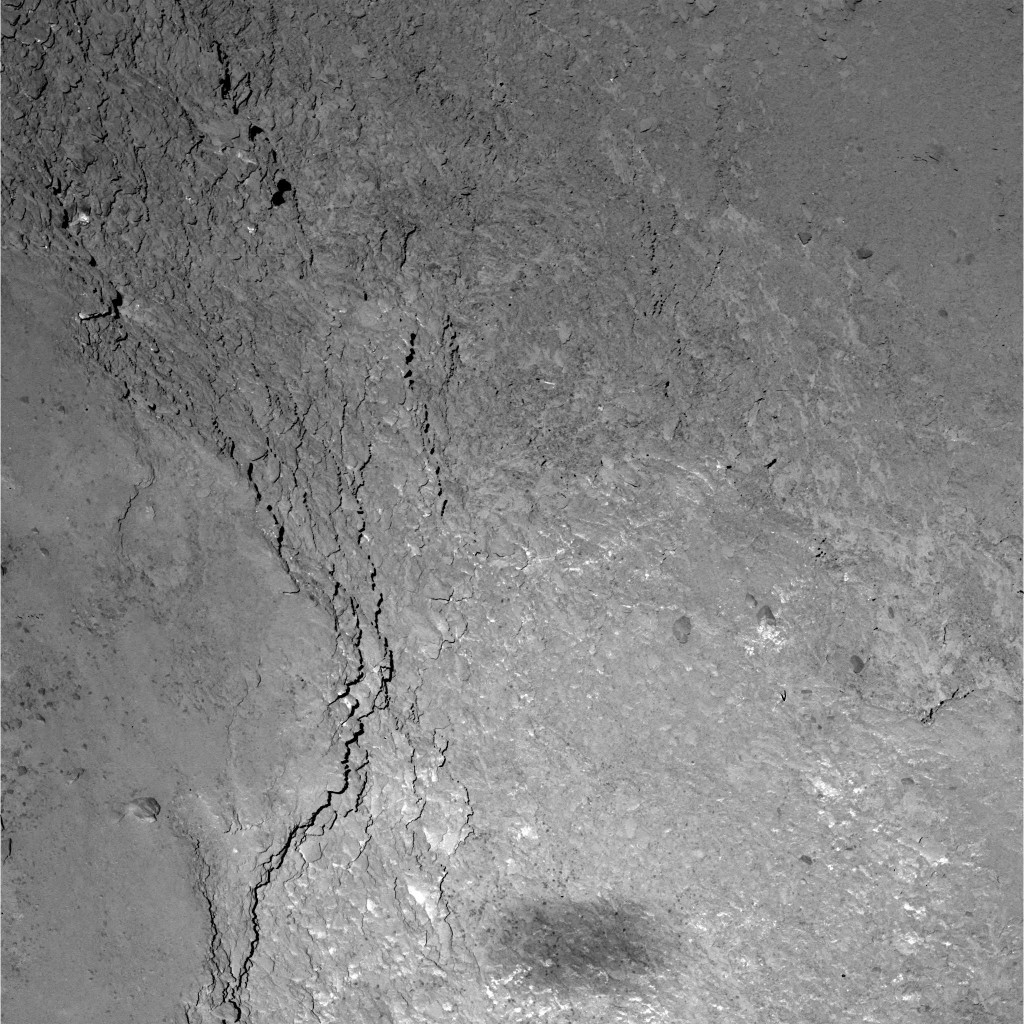
Close-up view of a 228 x 228 m region on the Imhotep region on Comet 67P/Churyumov-Gerasimenko, as seen by the OSIRIS Narrow Angle Camera during Rosetta’s flyby at 12:39 UT on 14 February 2015. The image was taken six kilometres above the comet’s surface, and the image resolution is just 11 cm/pixel. Rosetta’s fuzzy shadow, measuring approximately 20 x 50 metres, is seen at the bottom of the image.
Credits: ESA/Rosetta/MPS for OSIRIS Team MPS/UPD/LAM/IAA/SSO/INTA/UPM/DASP/IDA
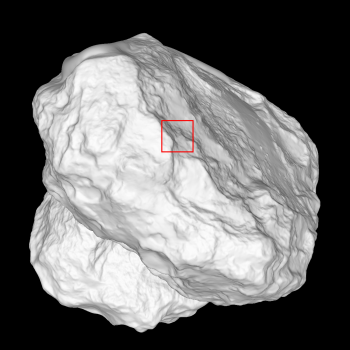
This OSIRIS shape model is marked with the position of the narrow-angle camera field of view taken during the 14 February flyby. Credits: ESA/Rosetta/MPS for OSIRIS Team MPS/UPD/LAM/IAA/SSO/INTA/UPM/DASP/IDA
The image released today shows an area near the edge of the comet’s “belly” close to the Imhotep-Ash regional boundary, where a mesh of steep slopes separates smooth-looking terrains from a craggier area. The image was taken from a distance of 6 km from the comet’s surface and has a resolution of 11 cm/pixel. It covers an area of 228 x 228 m.
To better identify the exact region on the comet, in the graphic below we compare the new OSIRIS narrow-angle camera image with a wider view of the comet, along with the NAVCAM image taken at 14:15 UT, noting that there are uncertainties in the distance to the surface and change in perspective between the images. Indeed, while the match on the smooth-looking region at the bottom of the NAC image in the displayed orientation is good, it is harder to match the upper half because of the lack of shadows in the NAC image, and because the geometry/viewing perspective has changed between the images. This means that the NAC image would have to be distorted and “draped” over the surface to fit the NAVCAM properly. To better understand the relationship of the images, you can download a short movie that fades through the images here.
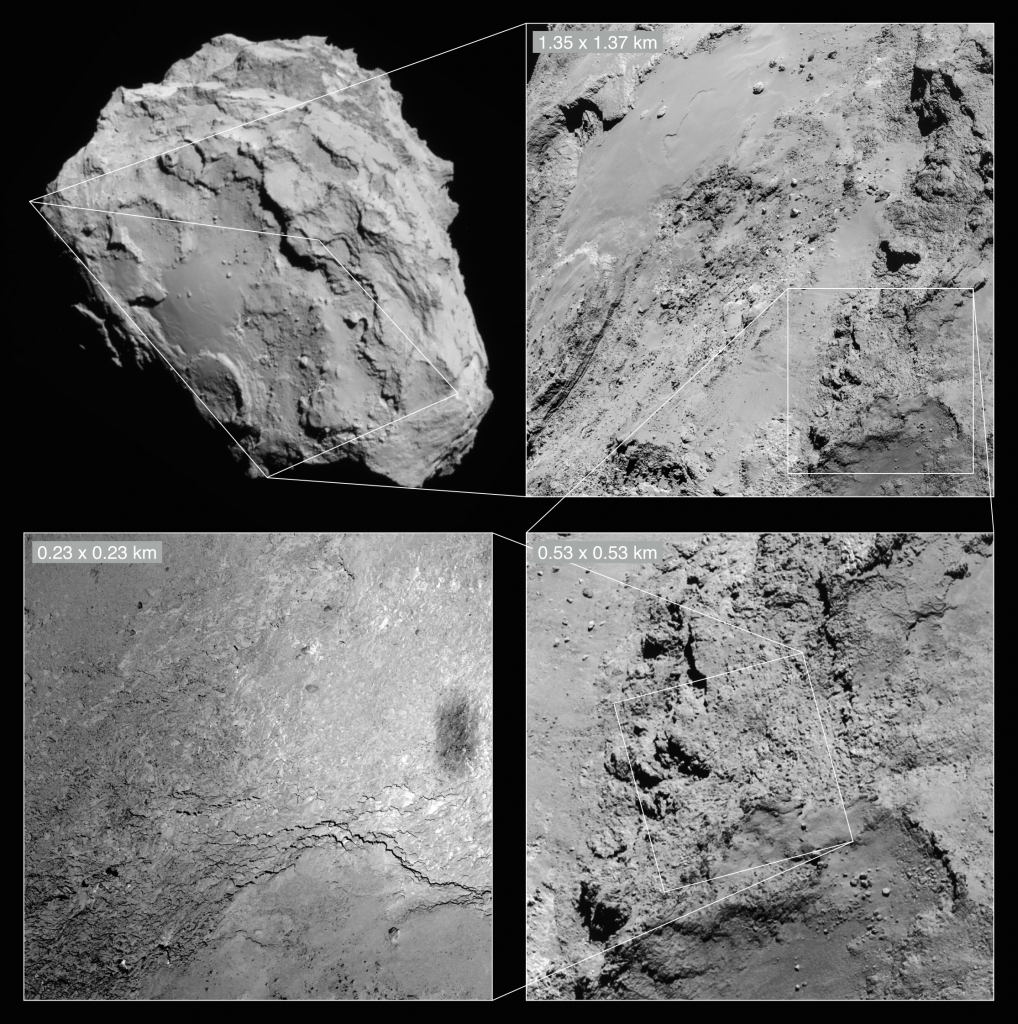
The OSIRIS narrow-angle camera image from the close flyby shown here in context with a NAVCAM image. Note the region outlined in the upper left is approximate due to the change in perspective.
Credits: NAVCAM: ESA/Rosetta/NAVCAM – CC BY-SA IGO 3.0;
OSIRIS: ESA/Rosetta/MPS for OSIRIS Team MPS/UPD/LAM/IAA/SSO/INTA/UPM/DASP/IDA
During the flyby, Rosetta not only passed closer by the comet than ever before, but also passed through a unique observational geometry: for a short time the Sun, spacecraft, and comet were exactly aligned. In this geometry, surface structures cast almost no shadows, and therefore the reflection properties of the surface material can be discerned.
“Images taken from this viewpoint are of high scientific value,” says OSIRIS Principal Investigator Holger Sierks from the Max Planck Institute for Solar System Research (MPS) in Germany. “This kind of view is key for the study of grain sizes.”
As a side effect of this exceptional observational geometry, Rosetta’s shadow can be seen cast on the surface of Comet 67P/C-G as a fuzzy rectangular-shaped dark spot surrounded by a bright halo-like region.
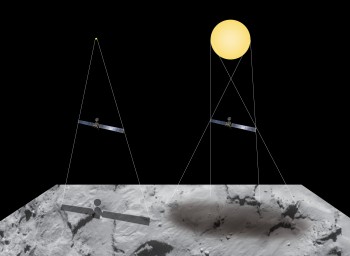
Graphic to illustrate the difference between how a sharp shadow is generated by a point source (left) and a fuzzy shadow by a diffuse source (right). Credits: Spacecraft: ESA/ATG medialab. Comet background: ESA/Rosetta/NAVCAM – CC BY-SA IGO 3.0
The shadow is fuzzy and somewhat larger than Rosetta itself, measuring approximately 20 x 50 metres. If the Sun were a point source, the shadow would be sharp and almost exactly the same size as Rosetta (approximately 2 x 32 m). However, even at 347 million km from 67P/C-G on 14 February, the Sun appeared as a disc about 0.2 degrees across (about 2.3 times smaller than on Earth), resulting in a fuzzy “penumbra” around the spacecraft’s shadow on the surface. In this scenario and with Rosetta 6 km above the surface, the penumbra effect adds roughly 20 metres to the spacecraft’s dimensions, and which is cast onto the tilted surface of the comet.
If you were standing on the surface with Rosetta high above you, there would be no place in the shadow where the entire Sun would be blocked from view, which explains why there is no fully dark core to the shadow.
Rosetta is not the first spacecraft to capture its own shadow in this way. In 2005, JAXA’s Hayabusa spacecraft captured its shadow on asteroid Itokawa. However, because Hayabusa was only a few tens of metres above the surface, the penumbral effect was much less, resulting in a sharper and darker shadow of the spacecraft.
Also, the comet surface surrounding Rosetta’s shadow on Comet 67P/C-G appears significantly brighter than the rest of the surface seen in the image. Scientists refer to this effect as the ‘opposition surge’ and it is commonly observed when highly-structured regolith surfaces on planets and moons are illuminated directly behind the observer. For example, astronauts on the lunar surface saw the effect surrounding their own shadows. The primary cause of opposition surge is ‘shadow hiding’. When the Sun is directly behind the observer, the shadows cast by small grains disappear from the perspective of the observer, hidden behind the grains themselves, leading to a pronounced increase in brightness. There may also be a contribution from coherent backscatter due to the retro-reflective properties of small dust grains.

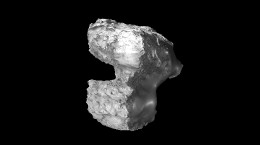
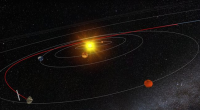
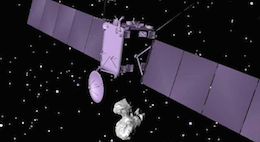
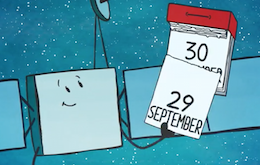
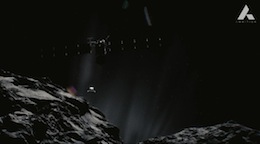
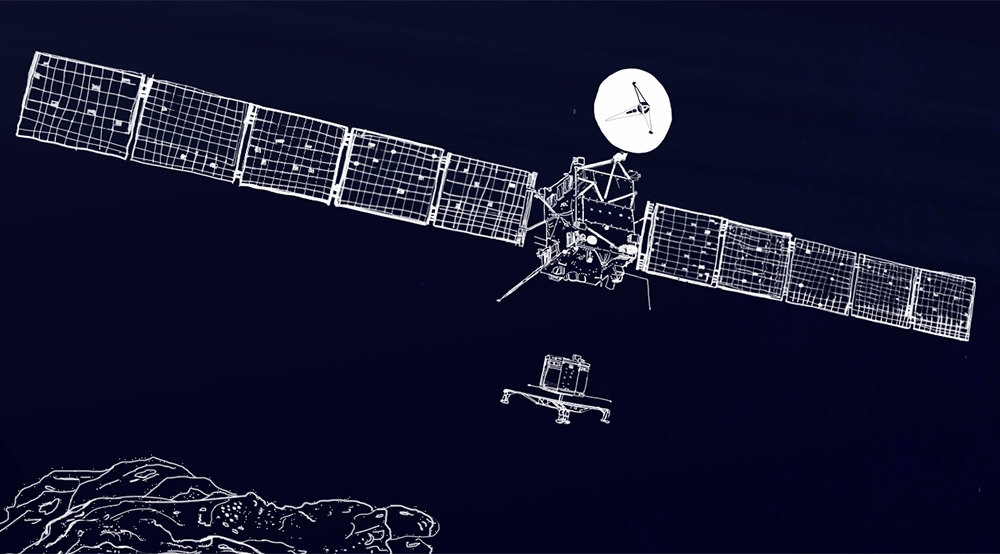
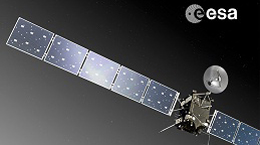
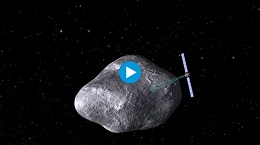
Discussion: 51 comments
11 cm! That may be the pixel width. It is irrelevant however as a dose of jpeg compression artifacts assures a modest reolution.
Compression and all: white-ish dots everywhere. What are they? Too small to be resolved by navcam and/ or at bigger distance it seems. They seem glowing bright, but exactly what absolute level of brightness does that correspond to?
Probably just death pixels, like in every digital camera.
In recent digital cameras, the embedded software detects the death pixels and replaces them by recalculating their value from neighboors pixels – the purpose is to avoid the users see they have death pixels.
Here, the sensor technology is quite old and the scientists does not need to mask death pixels, so it’s normal to see them.
Definitely a big difference between this release and the previously released 8km OSIRIS NAC image in terms of jpeg compression. I’d assume it’s due to different intentions, the 8km image was released as a full version/high quality because it was a cover image and needed all the resolution it could get. In this case the full version seems more of an after thought, a smaller version is enough to show the shadow.
Are you talking of this version?
https://www.esa.int/var/esa/storage/images/esa_multimedia/images/2015/02/14_february_close_flyby/15278761-1-eng-GB/14_February_close_flyby.jpg
It’s jpg, but it looks good to my eyes.
Some brighter material seems to be exposed, as well as several darker-looking grains.
Several shadows appear black.
Few image artefacts.
A very beautiful image revealing lot of detail.
Beautiful indeed, but olso heavily compressed.
Confirmed. Though I appreciate, that the OSIRIS team managed to release this version within short time after downlink. The image fits well with the intended purpose to show Rosetta’s penumbra and the ‘opposition surge’.
Vortex at pixel 665,510. This was flowing before being frozen. Actual material seems to go easily into flakes.
Thanks Emily! ESA thanks!
Team shooting super!
Flight team fantastic!
Perfect instruments, optical impeccable. . .
The right dose of entertainment and so much science,
a movie that will last months, years …
it will be the best summer of my life !!
Additional info or background of Hayabusa’s shadow.
(If my memory of what I heard directly from the mission team members, including the project manager Prof Kawaguchi, is still correct.)
According them, at first the mission team members did not recognise it as Hayabusa’s shadow even though they had from time to time seen something like a black spot on Itokawa, even when Hayabusa was still farther from Itokawa. They thought later that they should have expected in advance that Hayabusa’s shadow would appear on Itokawa.
One fact which is quite different from Rosetta’s case is that basically Hayabusa’s location was always right between The Sun and Itokawa. So the shadow must have been on Itokawa very often. I think I heard from a mission team member that they had plans to manoeuvre Hayabusa to some location which makes the Hayabusa-Itokawa-Sun angle 90 degree or something like that (which was the reason why one of the cameras was facing towards the direction which made 90 degree with the direction the sampler horn was facing towards). But they could not do it. Mainly because of the malfunction of reaction wheels and also they did not have enough time to for the window to return to Earth on schedule.
When there is a shadow there is solar energy?
Hi Peter. Indeed. Reflected from surroundings. That includes the other lobe, surface, cliffs and even particulate on flight above.
Hmm, lots of white spots including multiple ones… shame on you, navigation team, you never told us that you moved Rosetta to Ceres?
Well there we go, the diffuse shadow was actually easy to spot. As for the comet, well those jagged layers reminds me of what Philae saw at the final landing site. The ROLIS images are perhaps what first came to mind, although the “perihelion cliff” (CIVA6) might show the same thing as well.
Err, rather I’m talking about CIVA 1 in this case, not 6. So https://www.esa.int/spaceinimages/Images/2015/01/Perihelion_Cliff is the image I had in mind.
Thanks Daniel. Fortunate Synapses. It’s an ice, most of it.
How do you know this? As for this moment the are no evidence of this “rock” looking material to be ice.
You are right Lucas. Should be careful on the [lack of] framing in my arguments. Maybe ‘Suggests’ could fit.
On defending myself on the floor could say 60º symmetries, Highly rugged surface and -at the same time- ‘mirroring’ of the lander lamp, suggesting light go deep into the material before being reflected. Finally -on consulting my [earthly] memory- looks like something half way compact-snow/ice.
High stress fracturing. Just imagine sublimation pressure at those cracks.
Fascinating picture, thank you very much!
It’s very strange and unusual to try to interpret an image which has all shadows cast towards the center.
Since OSIRIS images have been uploaded, is there any progress in search for Philae? I know that rosetta passed the comet on almost the opposite side but during approach the landing site was visible from somewhat favorable distance and I believe there was promise that another attempt will be made…?
Thanks!
Is it true that I see ‘holes’ in the dust layer? Holes that were formed because of bubbles of gas escaped or are still escaping from that spot? Especially in the most detailed image ( with the shadow ) on the left-hand side, in the ‘higher’ area that seems to be covered by dust, looks like there are a lot of small holes or tiny caves.
What I find amazing are the long shadow lines on left of the picture. They look like the geological strata found on many Earth sedimentary rocks. This part of the comet is made of several layers. But what could cause geological stratification on a comet?
I think these layers are made of dust created by the comet each time it comes close to the sun. But what if the layers are made in another way?
Maybe this is the most surprising fact on the surface.
I really thought the finite sun size issue and low albedo would probably make it impossible to see the shadow. An impressive demonstration of OSIRIS’s capability. It would be interesting to know what the real contrast was, ‘stretched’ in this image I think.
Wonderful “zero-phase” images– they speak volumes about the nature of the surface materials.
And great explanations about the “penumbral” and “Heiligenschein” effects we see in the images.
https://en.wikipedia.org/wiki/Heiligenschein
–Bill
Beautiful details! The comet obviously has a layered structure.
Isn’t it time to stop referring to comets as dirty snowballs?
67p, C-G, the comet, the nucleus or Ducky is what this object is most commonly called. You just referred to the the comet as a dirty snowball. Why? “Dirty snowball” traces back to the sheer facts that comets are a mix of ices (plural) and dust. Beyond that no suggestion that giants in space molded them and tossed them around. “Dirty snowballs” can be layered. The “snow” may consist of mainly CO2. Nothing in “dirty snowball” prevents comets from being a heterogeneous mix instead of a homogeneous one. Snow instead of ice addresses the low density, that requires some kind of porosity, which is possible in small mass objects.
Layered structures on the surface is not in contradiction with “snowball” or “snowy dirtball” for that matter. Dry surface does not contradict dirty snowball: too hot, too low pressure. What is the problem? The layered structures in the present photos follow the nucleus’ outline, i.e.: nothing to indicate that C-G is a fragment of a larger object. In fact layering would fit a comets seasonal pattern of “thawing and freezing”. if ever possible, investigating the layering closely should reveal some of the history of changing seasons, orbits and climates.
@ Jacob :
” The layered structures in the present photos follow the nucleus’ outline, i.e.: nothing to indicate that C-G is a fragment of a larger object. . . . ”
_Perhaps you missed this photo
https://www.esa.int/spaceinimages/Images/2015/01/Hapi_and_Hathor
Notice: either “horisontal” or “vertical” stripes (layering) “” means gravitational center not always perpendicular to surface. “Vertical” lines/stripes similar to erosion like structures on earth?
There is actually a lot to suggest that the layers we see in the images of Imhotep continue parallel through the larger lobe rather than concentric. This becomes fairly clear with structures on surfaces perpendicular to imhotep.
There must be more than one possible mechanism to create layers of varying density. We know that the comet undergoes great regular changes in temperature and radiation levels which probably affect ice types etc. to some depth into the body. Each cycle could form a harder subsurface layer.
We probably don’t know precisely how it was formed in the first place, and if the process had some periodical aspect to it.
I’m not saying that I know, but it seems possible for a comet to have layers and not be of planetary origin (is that what you are hinting at?).
The term “dirty snowball” would in any case be an oversimplification (“snow”?), as is any analogy to things on earth, the conditions out there are just so much different to what we know from experience. Which also means that things are probably not what they look like to the human eye.
Agree with PTR. Energy flow can create ‘layering’ too.
As in Mars, lots of weatherization can occur under surface. Under-floods? 😉
Hi Jacob. Differing a little from you, see 67P too much polygonal as to qualify it as ball-y. Should we start to call it object, planetesimal [aggregate, composite, assembly], or any other word? Most of us call it ‘snow’ at this blog. Nowadays, acknowledging crystallization is quite different in space.
Hi John. Discourses and dictionaries in science by default change slowly. Exceptions occur: ‘Craters’ is a word suddenly disappearing from 67P discourse, nothing still to replace it.
May be I am too optimistic about this but i have a feeling that I see something like Philae in the image. Its on the upper left quadrant and i see Philae and its one leg. Can someone confirm?
Yup, I’m afraid you are being too optimistic: it’s completely the wrong end of the comet.
It looks stunning indeed.
Quick question: Is this image colorful or black and white?
Thanks, Antoan
Hi Antoan Arnaudov. Generated a grey scale copy and compared, see no difference. Quick answer B&W. It’s a luminance map. OSIRIS is powerful and don’t know which filter the Team used.
Very grateful to OSIRIS Team for this very close-up of 67P.
Liking this Emily article a lot 🙂
The ‘layered’ structures to the left apparent as recent ‘floods’ scenarios. Fractured an then embedded debris seem to suggest this signature.
Could be the post-processing, but seems that lower/upper luminosity delta is very high, suggesting a translucent, ‘gray wax’ looking surface, letting Sun to reflect over underlying, ice-richer material [aerogel model]. Another [more classical] plausible mechanism could be a surface full of vertical cracks.
Would go for the aerogel model. Easier to think of solar, superficial, little jetting.
Looking at the surface terrain structure, I see lots of edges… and edges on edges, with more edges on those edges.
Could it be that all these increasingly smaller edges, with ever thinner edges, are “sputtering” off gasses and dust….. Either through sublimation processes or electrical processes, or both?…… But whatever the mechanism…… the dust then seems to defy the gravity of the cometary body and “drifts” in a cohesive layer, like a terrain following “cloud or bubble”, neither accelerating away or sinking, while the top of that “cloud or bubble”, in certain areas, for some reason or another, gets accelerated from a horizontal orientation into a vertical direction towards the Sun……
I cannot see any “Geysers” or “volcanoes” or “nozzles” spraying gas, dust and ice into space….. all I can see is dust “floating” above the surface over the majority of the cometary surface in a layered “cloud” or “bubble” and in other parts it is streaming away in collimated streaks on the sunward side…. or do my eyes deceive me?
I would be really interested in seeing what the first image looks like at the 7% albedo level: i.e., no changing the exposore.
Bet it would look more like black wax.
I guess:
when we see something and describe them as “a”, “b”, “c”, “d”; they might later turn out to be: v, x, y, z.
I should emphasize on the error of visually interpreting the dark “shadows” as layered landscape: It is not that at all because lighting is exactly from behind the observer (if you see the observer shadow that means that the sun is exactly on your back.
The dark area cannot be cast shadow, because cast shadow are below the illuminated surface in front of it. That dark area are, to my opinion, much more interesting than the bright spots !
I postulate that these dark area are very deep fractures (similar to the crevasses in earth glaciers) due to shear stress on the kernel “crust”.
Due to the very low gravitation on the comet, very deep fractures can be mecanically stable (and consistent with the very low overall density of the kernel).
(a chance that Philae did not end tens of meter inside such a crevasse).
There are shadow. Only quite near to Rosettas shadow there are none at all.
Saturated pixel = black pixel. Add compression distortion and any interpretation of finer details will be hard.
Yes, the light source is behind the observer if you can see its shadow, but crucially the light source here is far, far away and we have a field of view of ~2,2 degrees on OSIRIS NAC. So the further away from Rosettas shadow that we get on the image, the larger the angle is between the view of the camera and the sunlight. It’s only in the very middle of the shadow cast by Rosetta that the light source is directly behind it (ignoring the fact that the sun isn’t a point source).
So yes, you can actually see shadows cast by the comet on itself despite us also seeing Rosettas shadow.
Good point, this view creates a surreal, actually.
This is due to the fact that Rosetta is much closer to the sun.
https://domelune.com/photos/67P-PhilaeTD19.jpg
https://www.atoptics.co.uk/atoptics/oppos2.htm
Never seen an aerogel sublimating, but that broken rock-ice at pixel 1534,1244 could tell a lot. One o’clock of Heiligenschein? effect.
Speculation: That rock-ice at one o’clock of Heiligenschein effect looks ‘basaltic’, freshly arrived. Volcanic?
Having some difficulty with the dimensions established in the four-image blowup. The Osiris picture only appears to show the central part of the bottom half of the square marked in the next bigger picture on the right, so is 288 metres square the correct figure?
Hi Lodaya. Seems original OSIRIS resolution 2048×2048. Distance 6000m. 2.22º field of view.
Emily: the picture of Imhotep on 20 March clarifies things, thanks. I was a bit surprised where the crags in the 0.53 km view had disappeared to.